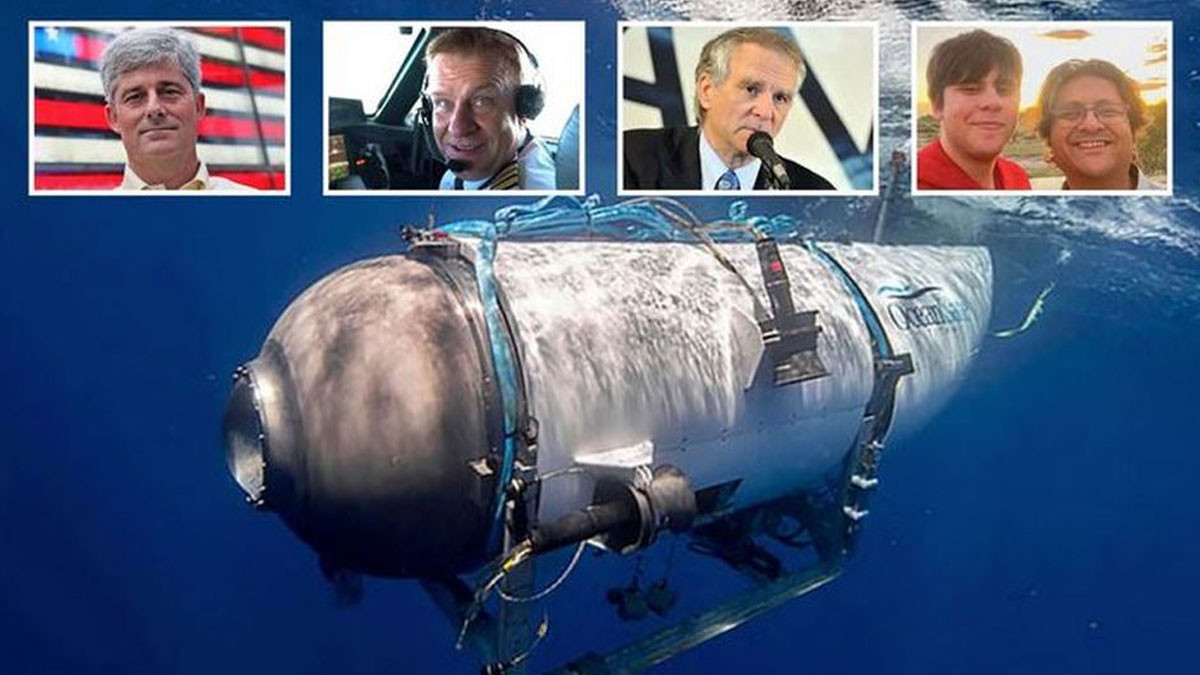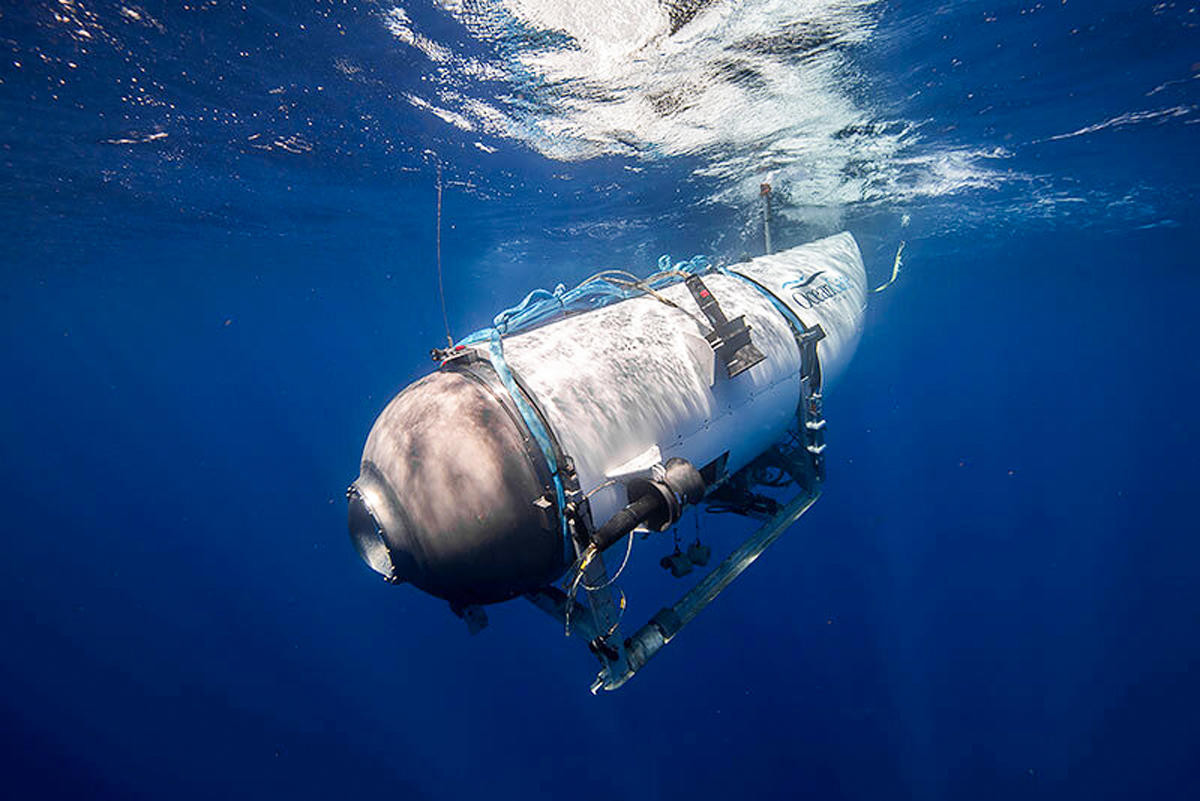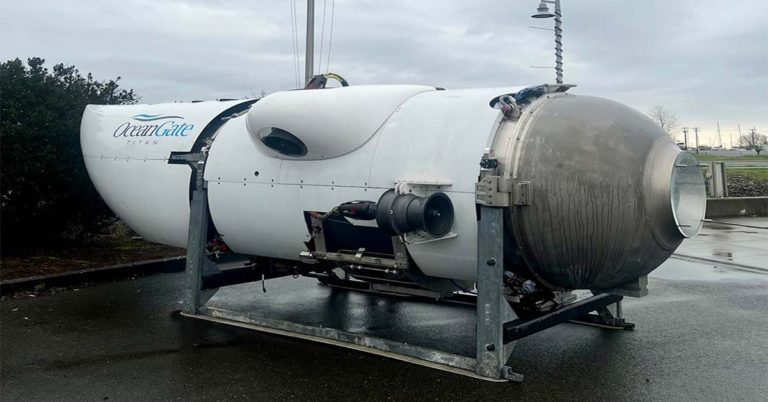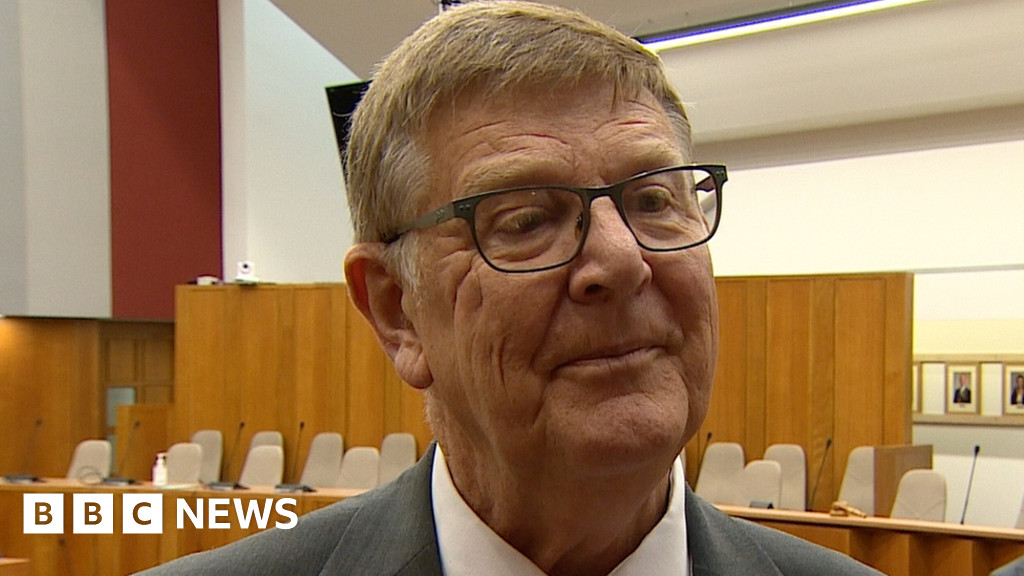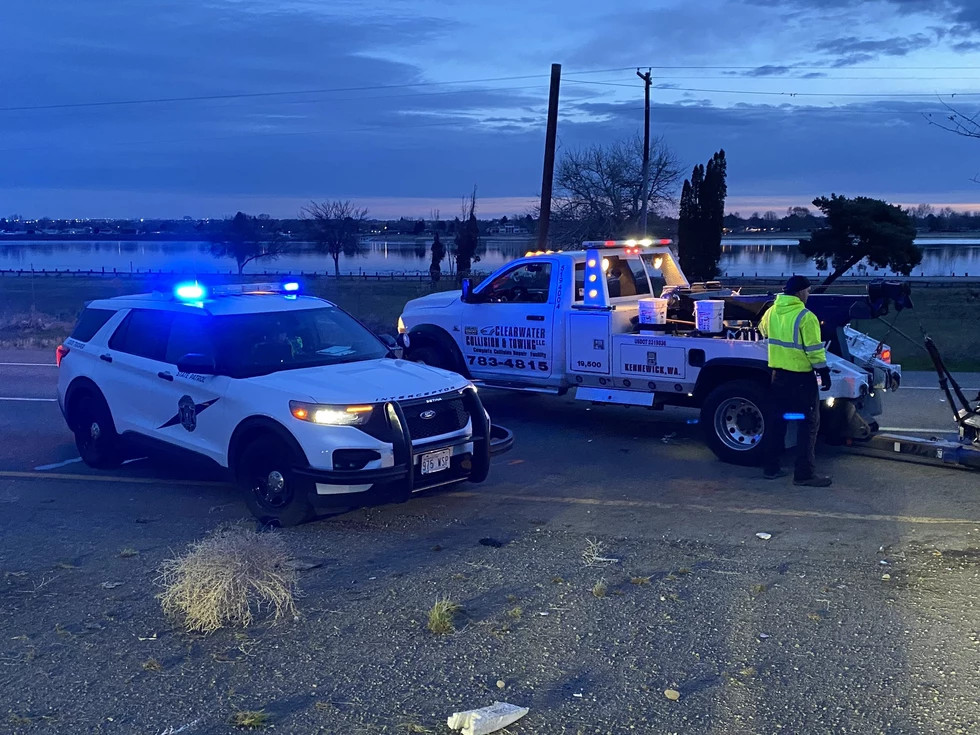The hearing aims to uncover the facts surrounding the incident and develop recommendations to prevent similar tragedies. A statement released by the US Coast Guard explained: “The hearing will examine all aspects of the loss of the Titan, including pre-accident historical events, regulatory compliance, crewmember duties and qualifications, mechanical and structural systems, emergency response and the submersible industry.”
The Coast Guard Marine Board of Investigation released the schedule and witness list earlier this month, which includes 10 former employees of American tourism and expeditions company OceanGate.
Notable figures include engineer David Lochridge, who alleges he was fired from OceanGate in 2018 for raising safety concerns about quality control, as well as Triton Submarines' co-founder Patrick Lahey, who shared his first public comments on the Titan submarine disaster on a special episode of the Big BOAT Interview. He said the submersible was an “experimental monstrosity that should never have carried people”.
BOAT will provide daily coverage and updates on the court hearing as it unfolds.
Titan Submersible's Last Message Before Implosion
“dropped two wts,” the Titan’s text to its mother ship read, referring to weights the submersible could shed in hopes of returning to the surface. A lawsuit by the family of one of the victims has claimed the message, sent about 90 minutes into the vessel’s dive, was an indication the crew might have known something was wrong and were trying to abort the mission.
Instead, seconds later, the Titan was “pinged” for the last time, according to the opening presentation Monday, on the first day of a two-week hearing held by the Marine Board of Investigation tasked with reviewing the tragedy. The mother ship, the Polar Prince, then lost track of the vessel.
Days later, authorities found its wreckage resting on the floor of the North Atlantic Ocean, several hundred yards from the location of the Titanic.
Former OceanGate Employee Raises Concerns
David Lochridge, OceanGate's former operations director, testified and explained how the CEO, Stockton Rush, and the former engineering director of OceanGate Tony Nissen, removed the University of Washington Applied Physics Lab (APL) from the project to design the Titan vessel in-house. Lochridge went on to say he had “no confidence whatsoever” in the way Titan was being built at the time.
In terms of why his concerns were dismissed, Lochridge continued: “Cost-cutting. Bad engineering decisions. I'd say that's the two main things. The desire to get to the Titanic as quickly as they could to start making profit.” He continued: “There was a big push to get this done, and a lot of steps along the way were missed and it was pretty evident, not just to myself” but also to other “experienced submersible pilots”.
Lochridge stated: “We all voiced concerns about what was happening in terms of the engineering of Titan and even more so when the components started arriving at the facility in 2017.”
He continued: “There was no experience across the board within that organisation. [...] It was all smoke and mirrors – all the social media you see about all these past expeditions. They always had issues with their expeditions. I didn't know this at the time until I [moved across to OceanGate], speaking to contractors that had been on the previous jobs.”
In terms of the products used to make the submersible, Lochridge said: “Everything that came in had anomalies or deficiencies in the product itself”. He also said that all the parts were repurposed from the original vessel, with the exception of the carbon fibre hull, which was down to cost: “I wasn't there for that, but I know firsthand that everything was reused. I am sure that will all come up as part of the investigation.”
Testimony from Former OceanGate Employees
Day one (Monday 16 September): “100 per cent” pressure to get Titan in the water
Former OceanGate employees Tony Nissen, Bonnie Carl, and Tym Catterson testified. Nissen explained there was “100 per cent” pressure to get Titan into the water. Meanwhile, Carl testified that Lochridge had deemed Titan as “unsafe.” Lochridge will appear in court 17 September. According to an animated re-creation of the incident, the last words heard from the crew to the mothership were, “all good here”.
24 witnesses will give testimony to the Titan Marine Board of Investigation. Below are the 10 former OceanGate employees.
Mr. Tony Nissen, former OceanGate engineering director Ms. Bonnie Carl, former OceanGate human resources/finance director Mr. Tym Catterson, former OceanGate contractor Mr. David Lochridge, former OceanGate operations director Ms. Renata Rojas, OceanGate mission specialist Dr. Steven Ross, former OceanGate scientific director Mr. Fred Hagen, OceanGate mission specialist Mr. Guillermo Sohnlein, former OceanGate co-founder Mr. Phil Brooks, former OceanGate engineering director Ms. Amber Bay, former OceanGate director of administration
The Titan Submersible Disaster
On 18 June 2023, the 6.7-metre submersible Titan imploded during a descent to the Titanic wreck at 3,800 metres below sea level. Operated by OceanGate, Titan had five passengers on board who subsequently all died from the sub's violent inwards collapse.
Pakistani investor Shahzada Dawood and his son Suleman, British businessman Hamish Harding, French diver Paul-Henri Nargeolet and OceanGate CEO Stockton Rush were the victims aboard the deep-water vessel when the incident occurred.
Titan was expected to take around two and a half hours to reach the wreckage but soon lost contact with its mothership, Polar Prince, kickstarting a search operation for the missing submarine. The news grabbed the attention of media outlets across the globe and updates trickled out across the week, rocking the yachting and submersible industry.
Investigation and Aftermath
The US Coast Guard convened a Marine Board of Investigation (MBI) into the loss of the Titan submersible and the investigation is ongoing. While many theories and studies have circulated as to the cause of the Titan submarine tragedy – including microscopic imperfections in the carbon fibre hull – no conclusion has been reached as of yet.
An investigation into the incident was launched by the US Coast Guard in June last year, which convened a Marine Board of Investigation (MBI) into the loss of the Titan submersible. The MBI – the highest level of investigation in the Coast Guard – examined “whether there is need for new laws or regulations, or amendment or repeal of existing laws or regulations, to prevent the recurrence of the casualty”.
The Coast Guard received debris and evidence recovered from the seafloor at the site of the Titan submersible (28 June 2023). Later in the year, marine safety engineers with the MBI launched a follow-up salvage mission which recovered additional presumed human remains that were carefully recovered from within Titan’s debris. The evidence was transported for analysis by US medical professionals (4 October 2023).
International Collaboration
A couple of months on, the US Coast Guard, National Transportation Safety Board (NTSB), Transportation Safety Board of Canada (TSB) and the French Marine Casualty Investigation Authority (BEAmer) conducted an evidence review of recovered Titan submersible debris in Newport, Rhode Island (8 November 2023).
Jason Neubauer, Coast Guard chair for the Titan Marine Board of Investigation (MBI), said: “This effort underscores the importance of international and interagency coordination in marine casualty investigations. Our partnerships with NTSB, TSB and the French Marine Casualty Investigation Authority enabled a thorough examination of the international incident, promoting safety and transparency.”
Timeline of Events
08:00: The Titan submersible was launched from its mothership, Polar Prince (previously CCGS Sir Humphrey Gilbert). 09:45: Contact between the mothership and the submersible was lost. The U.S. Navy also noticed “an anomaly consistent with an implosion or explosion”. 15:00: Titan was scheduled to resurface but did not. 17:40: The U.S. Coast Guard was notified.
The search for Titan began.
Speculation began surrounding sonar detecting “banging” noises in the search area. These are later determined to be natural ocean sounds.
Debris and remains of the sub were found around 500 metres from the bow of the Titanic. Citing this, the Coast Guard announced that the submersible had suffered a “catastrophic implosion.”
The Coast Guard arranged a Marine Board of Investigation (MBI) to determine what happened to the Titan.
The wreckage of the Titan submersible was found on the ocean floor, approximately 300 meters off the bow of the Titanic, and brought to St. John's, a city on Newfoundland island off Canada's Atlantic coast.
OceanGate announced it is ceasing operations.
Lawsuit Filed by Nargeolet's Family
The family of French diver Paul-Henri Nargeolet, one of the passengers who died in the fatal Titan disaster, filed a wrongful death lawsuit seeking more than $50,000,000 against OceanGate (August 2024).
Accusing the submarine operator of gross negligence, the lawsuit claimed the waiver and release “failed to disclose many key, relevant risk factors, [...] regarding the design and operation of Titan or the materials used in its construction.” In particular, it mentioned the submarine's carbon fibre hull, which was reportedly “not properly tested for integrity”.
The complaint goes on to suggest the distressing conditions the passengers on board may have experienced in their final moments: “The crew may well have heard the carbon fibre’s crackling noise grow more intense as the weight of the water pressed on Titan’s hull. The crew lost communications and perhaps power as well. By experts’ reckoning, they would have continued to descend, in full knowledge of the vessel’s irreversible failures, experiencing terror and mental anguish prior to the Titan ultimately imploding.”
OceanGate has so far declined to comment on the lawsuit, which was filed in King County, Washington.
Industry Experts Speak Out
Speaking on a special episode of the Big BOAT Interview alongside Rob McCallum, co-founder of EYOS Expeditions, Triton Submarines' co-founder Patrick Lahey recalls pleading with his long-time friend and Titanic expert Paul-Henri Nargeolet, who was killed in the incident, not to dive with OceanGate. “I tried to do everything I could to discourage him from going out there. I know many people that knew him did the same thing.”
McCallum also discusses his now well-publicised email exchange with OceanGate CEO Stockton Rush, who also died on the dive, warning him that he was courting disaster by taking the uncertified Titan submersible to such extreme depths.
“He was completely dismissive,” McCallum says. “The minute I found out it was going to be an unclassed vehicle, that's when the alarm bells rang. But perhaps the biggest red flag of all was when a senior member of the OceanGate team wrote a report laying out the 26 or 27 things wrong with the sub and suggested solutions to those problems and he was silenced.”
McCallum also relates the final time he met Rush, at a dinner, when, “I told him in no uncertain terms that he was doing the wrong thing”.
Lahey also met Rush, and toured the OceanGate submersible while it was being tested in the Bahamas. “There were glaring defects. I made this list of things for them to address. But when I looked at it, I thought I didn't have to worry too much as there was no way it was ever going to see the light of day.”
Both Lahey and McCallum underline the point that to prevent similar incidents, all submersibles should be subject to third-party certification.
“It's essential,” says Lahey. “If people insist on [accreditation] you can be assured that the craft that you're getting in has been reviewed independently by a group of professionals and according to a set of rules, it will be safe. If you look at the track record of certified craft, it is without peer – 50-plus years of absolute safety.”
You can listen to the full interview with Lahey and McCallum on the BOAT Briefing podcast. A new episode is released every week, and you can listen via Apple Podcasts and Spotify. Don't forget to subscribe so you never miss an episode of the superyacht industry's biggest podcast.
The Future of Submersible Safety
The Titan submersible disaster has raised serious questions about the safety of private undersea exploration. The incident has highlighted the need for stringent regulations and independent certification for submersibles, particularly those operating in deep-sea environments. As the Coast Guard's investigation continues, the lessons learned from this tragedy will be crucial in ensuring the future safety of those venturing into the depths of the ocean.
The hearing is being held in North Charleston, South Carolina, and is expected to take place over nine days between Monday and Friday, September 27. It is being streamed live on the Coast Guard’s YouTube page.
When the investigation is complete, the US Coast Guard and the National Transportation Safety Board will each conduct an independent analysis and complete reports, Neubauer said Sunday. He cautioned additional hearings could be held in the future, and he would not provide an estimated timeline for the conclusion of the investigation.




